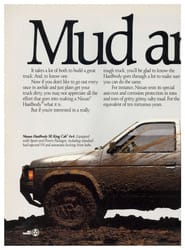
HOW TO CHANGE COURTS IN WORLD-RECORD TIME
Jack Wilson of Jackson, Miss., has been resurfacing composition tennis courts for a dozen years, and all along he had a notion there had to be a better method than the tedious and expensive one that was developed in the 1930s. "You grab a 30-inch squeegee and a bucket [of acrylic coating] and go to work," says Wilson. "It's hard work and not very efficient."
What Wilson dreamed of was some kind of machine that would resurface a court in much the same manner that a highway crew blacktops a street. But not being an inventor, he couldn't translate his concept into a workable design.
In January '86, Wilson shared his thoughts with Jerry Dykes, a mechanical engineer from Vicksburg, Miss. Dykes, who had had limited success with an electrical weed killer he invented, worked for three months with Wilson, and they came up with the Sport-Koter, an automated resurfacing machine. It was the machine of Wilson's—and other resurfacers'—dreams.
Resurfacing a tennis court the conventional way can take two or three people two or three days and, as Mike Silverman, director of tennis for the City of New York, says, "It's a real art form. The people doing it have to delicately sweep the resurfacing material so there are no creases. You really have to have someone who knows what he's doing."
Silverman, who is responsible for approximately 700 public courts in the five boroughs of New York, recently got a call from Wilson, who told him that instead of the two or three days per court, a crew of three using the Sport-Koter could do the job in less than two minutes—not counting the preparation time. Thirty minutes later, players can start batting balls around on the fresh, smooth new acrylic surface.
Wilson explained that the machine has two arms that can be spread wide enough to coat a 60-by-120-foot court in a single sweep. It operates something like a combination power paintbrush and lawn mower, and you can either ride it or let it steer itself. You dump 55 gallons of acrylic in front of the Sport-Koter's brushes and squeegees and yank on a rope to start its gasoline-powered five-hp engine, and you're off.
Silverman was skeptical. For a true test of the machine, he decided to send Wilson out to resurface a court in Astoria Park that was directly underneath the Triborough Bridge in Queens. Silverman considered it the worst court in New York City.
"It hadn't been resurfaced in four years, and it looked like a war zone," says Silverman. "It had grass growing up between the cracks on the baseline. What's worse, it wasn't scheduled to be resurfaced for another two years."
That sort of neglect tends to be the case with most urban courts, according to Craig Pautler, a member of the U.S. Tennis Association's facilities committee, which is in the process of taking an inventory of every public court in the nation. Under normal wear and tear, those 300,000 or so courts should be resurfaced every three or four years, says Pautler. Instead, most of them go seven to 12 years between coats of acrylic.
"By then," says Pautler, "the courts are in such terrible condition that a city frequently has to take the lowest bid in order to get them back in shape. And often they end up with somebody who mixes mostly water with the acrylic and doesn't do as good a job as he should."
But that's not what happened to the worst court in New York City. "Jack Wilson's crew pulled up the grass, patched the cracks, ran the Sport-Koter over the court, and you should see it now compared with the old court right next to it," says Silverman. "It's beautiful." The whole job took about four hours.
The Sport-Koter can also be used to resurface parking lots and bike paths, and can be set up to wash and dry tennis courts. It retails for about $20,000 and comes with a trailer and enough acrylic to cover just one court. The cost of resurfacing one court by hand is between $2,200 and $4,500, including acrylic and depending on the credentials of the resurfacer. Thus, Sport-Koter would pay for itself after 15 or so resurfacings (including the cost of materials, about $800, and labor, about $100). Wilson says a Sport-Koter should have a lifetime of about 10 years.
Wilson has sold 21 Sport-Koters in the six months since he put the machine on the market. One of his customers is Ross Brown, an Evansville, Ind., tennis court contractor who spent six years resurfacing courts by hand at John Newcombe's Tennis Ranch in New Braunfels, Texas.
"Besides the tremendous amount of time you save doing banks of courts, I like the Sport-Koter because it beats the heat problem," says Brown. "I can't put down a coat of acrylic by hand in midday heat because the temperature causes the sand in the acrylic mixture to fall out. But I can with the Sport-Koter."
The reason is speed. All acrylic coatings depend upon a mixture of sand and water to give the court texture and make the ball bounce more slowly than it would on a parking lot. But while workers sweep a court with a squeegee over and over trying to get the acrylic layer smooth, the sun tends to break down the coating's viscosity. That causes the sand to separate from the mix, which results in color-streaking on the court.
"Because the Sport-Koter makes one pass, it doesn't streak, not even in midday heat," says Brown. "Now I don't have to do all my resurfacing at 5:30 in the morning or after six at night."
PHOTO
MANNY RUBIO
The long arms of the Sport-Koter make short work of resurfacing tennis courts.
PHOTO
MANNY RUBIO
Inventor Dykes (right) worked with marketeer Wilson to create their dream machine.

